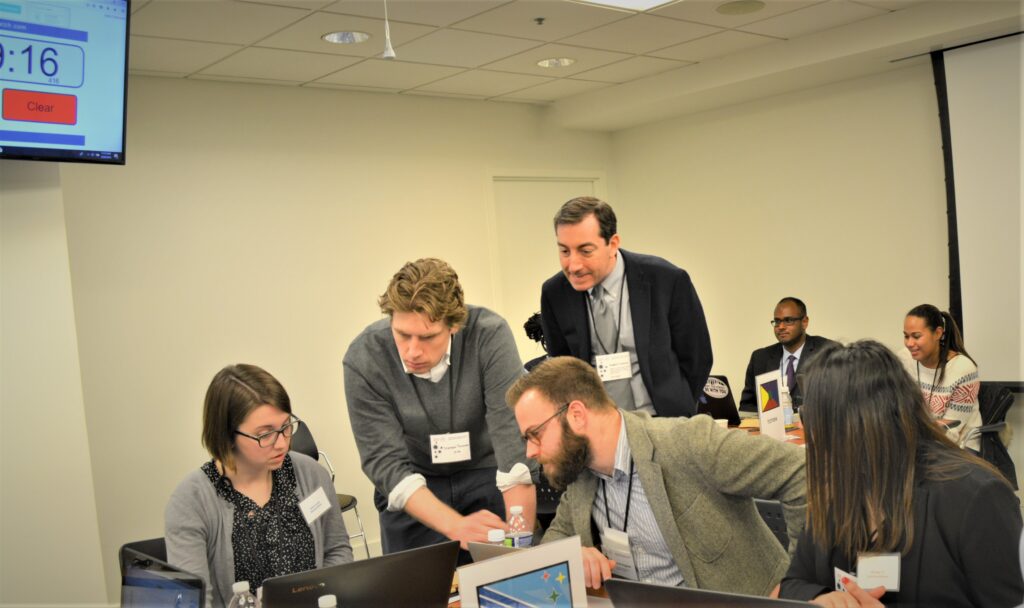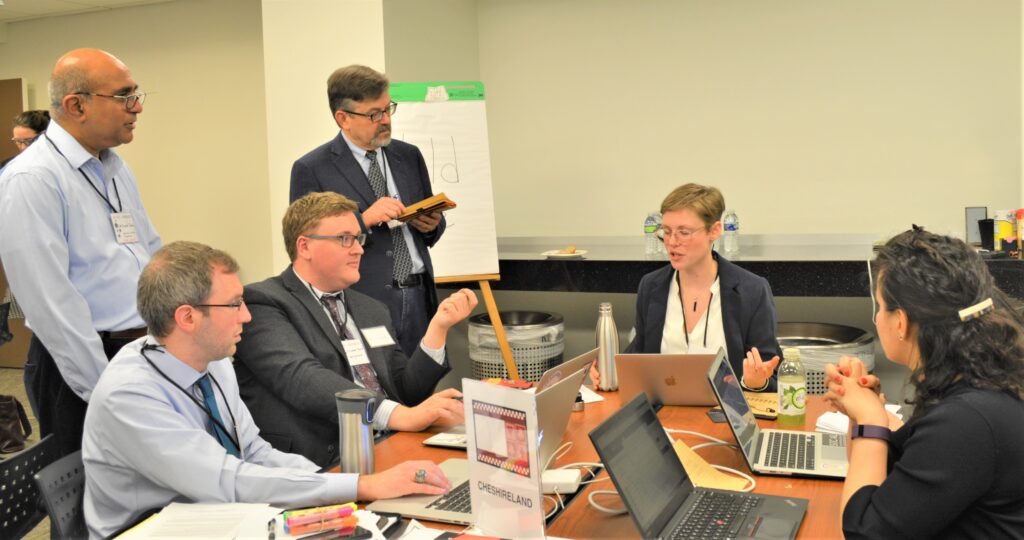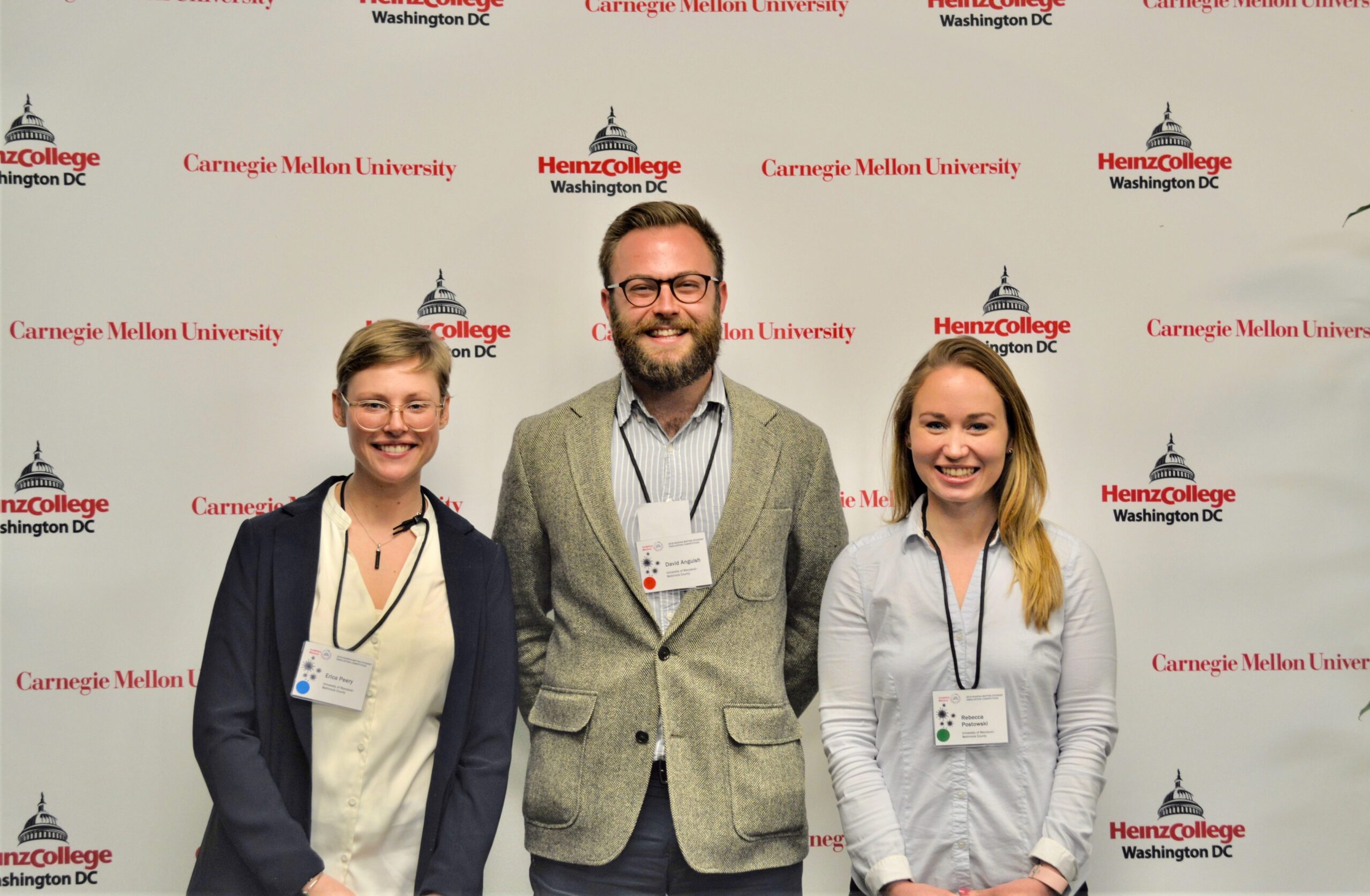The prime minister and minister of public health were in deep discussion about how to solve a major health pandemic, but their situation room wasn’t at the United Nations or in a parliament building, it was in a conference room. The state actors were UMBC students and, fortunately, the pandemic was actually an exercise in public affairs crisis management.
The UMBC School of Public Policy recently participated in its first National Association of Schools of Public Affairs and Administration (NASPAA)-Batten Student Simulation Competition. Representing UMBC were Erica Peery, M.P.P. ‘18, public management; Rebecca Postowski ‘16, geography and environment systems and political science, M.P.P. ‘19, environmental policy, and David Anguish ‘12, political science and modern languages linguistics and intercultural communication, M.P.P. ‘18, public management.

UMBC’s students competed at the Washington, D.C. campus of the Carnegie Mellon University Heinz College of Information Systems, Public Policy, and Management, alongside students from the University of Pennsylvania, Rutgers University, Carnegie Mellon University, and University of Maryland, College Park, broken up into multi-university teams of 5-6 students each. Among the other 560 participants were students at competition sites in nine U.S. states as well as in China, Colombia, Egypt, Hungary, and South Korea.

David Marshall, NASPAA’s director of development, explains that the goal of the simulation “is to prepare public policy students with issues they are going to encounter in the real world.”
As simulation judge Anand Desai, section head of evaluation and assessment capability at the National Science Foundation, shared, “The competition helps policy students think through a broad range of “what if” scenarios, and the more complex and real the simulation feels, the more effective it will be as a tool to prepare participating students.” With this in mind, each competition takes on a significant area of international policy, and this year the focus was pandemic preparedness.
Each team represented a country, where team members simulated roles such as prime minister, minister of finance, and minister of public health. The teams made decisions based on a situation brief and available data. Each step in the game provided participants with a new opportunity to analyze, forecast, collaborate and provide policy recommendations.
The game was designed by the Center for Simulation and Gaming at the Frank Batten School of Leadership and Public Policy at the University of Virginia, directed by Noah Myung. “Public policy and science go hand in hand,” Myung explains, noting, “We need both to create realistic simulations that can be used across different disciplines and organizations to help create real global solutions by interdisciplinary teams.”

It was that interdisciplinary and global focus that inspired UMBC to join the competition this year. Susan Sterrett, director of UMBC’s School of Public Policy, selected the UMBC members for not only their exceptionally strong academic achievement but also their involvement in interdisciplinary activities.
The teams played four rounds, which also included writing policy briefs and making a final presentation. Postowski’s team advanced to the semifinal round, and she reflects that the simulation experience helped her to more clearly understand the interconnectedness of economic, health, environmental and transportation issues, and the relationship between domestic and international concerns.
“The simulation helps you think broadly and strategically,” the UMBC environmental policy graduate student says. “The key concepts of policy considerations, how they are weighted, considering the stakeholders involved, and measuring those outcomes can be applied to any scenario.”
Banner image by Catalina Sofia Dansberger Duque for UMBC.
Tags: CAHSS, diversityandinclusion, PublicPolicy

